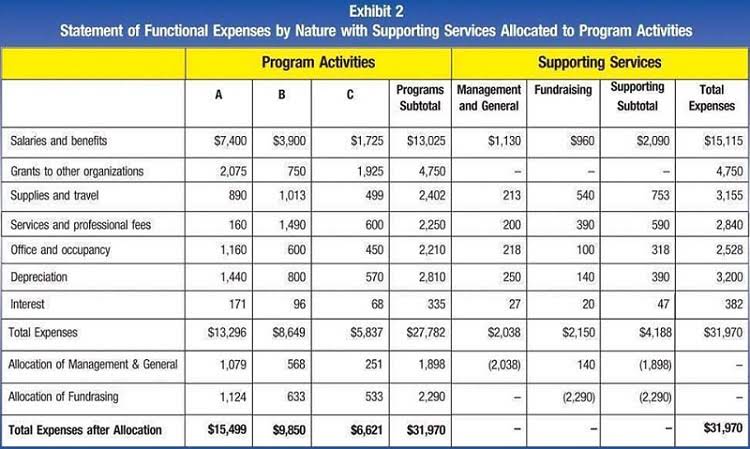
Construction-in-Progress (CIP) and Work-in-Progress (WIP) accounting share similar terminology but serve fundamentally different accounting purposes. For instance, if a cement manufacturing company is expanding the manufacturing unit. It will use cement from its own inventory, therefore, debiting the inventory account. If your company has CIP/WIP and you are on NetSuite, my guess is you have run into challenges. NetAsset provides a platform to aggregate and capitalize CIP in one easy step. In the screenshots below, you can see an example of 1) the full asset roll forward report and 2) the report zoomed in on asset type.
What is Construction In Progress Accounting: Everything You Need To Know
Regular reviews of expense reports, vendor invoices, and project documentation all help in identifying missing items before they affect financial statements. Cross-functional coordination between accounting, procurement, and project management teams further strengthens your control environment. This guide explains the essential principles of CIP accounting and provides practical strategies for Controllers to maintain accuracy, compliance, and financial clarity throughout your construction projects. During the construction, company needs to record revenue, expense and accounts receivable. It is the comparison between cost incurred and the total cost to complete the construction. If the company has properly estimated the total cost of construction, they will be able to get the percentage of completion.

Revalue Accumulated Depreciation
- The construction in progress account is reported on the balance sheet under current assets, while the recognized revenue and expenses are reported in the income statement.
- If the costs incurred to date are $400,000, the percentage of completion is 50%.
- The zero-margin method can also be applied in situations where it is difficult to measure the outcome of a performance obligation.
- Instead, contract revenue should only be recognized to the extent that contract costs are expected to be recoverable.
The total amount of gross profit recognized over the three-year contract is $4,900,000, which represents the difference between the contract revenue of $25 million and the total project costs of $20.1 million. It is not uncommon for the total project costs to differ from the original estimate. Adjustments to estimated project costs are always captured in the current year only. It is assumed that estimates are based on the best information at the time they are made, so it would be inappropriate to adjust previously recognized profit.
How do you calculate CIP in accounting?

Investing in team education provides the confidence and capability to Bakery Accounting address CIP complexities. Well-designed controls and thorough audit preparation not only reduce errors, but also build stakeholder confidence in accurate financial reporting and management effectiveness. Most of the time, company record the expense base on the actual cost and they use the cost estimate as the percentage of completion. Similar to the cost-to-cost method, this method tries to estimate the percentage of completion based on the work performed.

Additional Reading and Resources
- If the business will the asset when it is complete, it will be a fixed asset.
- The bank charges an interest rate of 6% per year and needs to pay every month end.
- It will use cement from its own inventory, therefore, debiting the inventory account.
- Rohe Construction Ltd. signs a contract with a customer to install a distillation tower in an oil refinery.
- These can include professional fees for architects and engineers who design the project.
- For amortized adjustments, Oracle Assets spreads the adjustment amount over the remaining life or remaining capacity of the asset.
Any adjustment amount missed since the amortization start date is taken in the current period. Oracle Assets is fully integrated with Oracle Subledger Accounting for generating accounting entries, transaction drilldown, and reporting. Additionally, QuickBooks Online allows you to track your journal entries accurately in QuickBooks Online. To do http://tha.cubixdesigns.com/medicare-lifetime-reserve-days-rules-costs-and/ so, you can delete the transactions added by mistake or update them if necessary. If the company’s loan is for the construction purpose only, so the company must capitalize the actual interest expense less the interest income from the unused fund.

Final Costs Incurred:
- With input methods, the problem may be that the input measured does not directly correlate to the transfer of control of goods or services to the customer.
- You can also filter using native NetSuite segments and the time range you would like to see.
- Then, I suggest using a journal entry to enter the assets manually and the transactions made for the particular property.
- Then, add the two charged items to ensure a negative amount for Transfer into COS.
- However, this approach would not properly reflect the periodic activities of the business.
CIP appears under the Property, Plant, and Equipment (PP&E) section, reflecting the value of ongoing construction projects. The CIP balance shows capital investment in active projects, offering stakeholders cip journal entry insight into ongoing commitments. Detailed CIP records give stakeholders confidence in a company’s financial practices, especially during audits.
